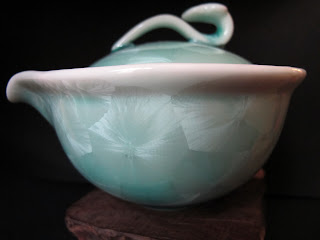
The item was made out of precious white jade and was crafted for the famous Chinese emperor Qianlong during the 18th century.
Despite being 275-years-old, the teapot's condition remained exquisite, having hardly ever been used for tea-making.
It was taken out of China by the British in the 19th century and was put on display at the International Exhibitions in London in 1871 and 1886.
It was then bought by the British aristocrat Hinton Daniell Stewart in the late 1880s and has been passed down through his family.
A relative, who lives in the south-east of England, was the beneficiary of the staggering sum paid by a Hong Kong buyer.
The oriental market is buoyant at the moment as newly-rich Chinese collectors seek to buy back their heritage.
Clare Durham, of auctioneers Woolley and Wallis in Salisbury, Wiltshire, said: 'It might look like a normal teapot to the untrained eye but this item has been made from one of the finest pieces of stone you are ever likely to find.
'It is probable that this piece was made towards the end of the Qianlong reign, when large jade boulders were often carved to make pieces of art.
'You cannot fault its condition. It is a piece of stone that is pretty much flawless. There are no chinks or chips in it.
'It is an imperial piece made for one of the imperial palaces. I'm not sure if it would ever have been used to make a cup of tea but may have been used during the famous Chinese tea ceremonies.
'White jade is particularly rare and is very much sought-after by the Chinese because they regard it as pure."
The teapot is nearly eight inches long and five inches high. It has a compressed circular body and a C-scroll handle with two grooves on the end."

















